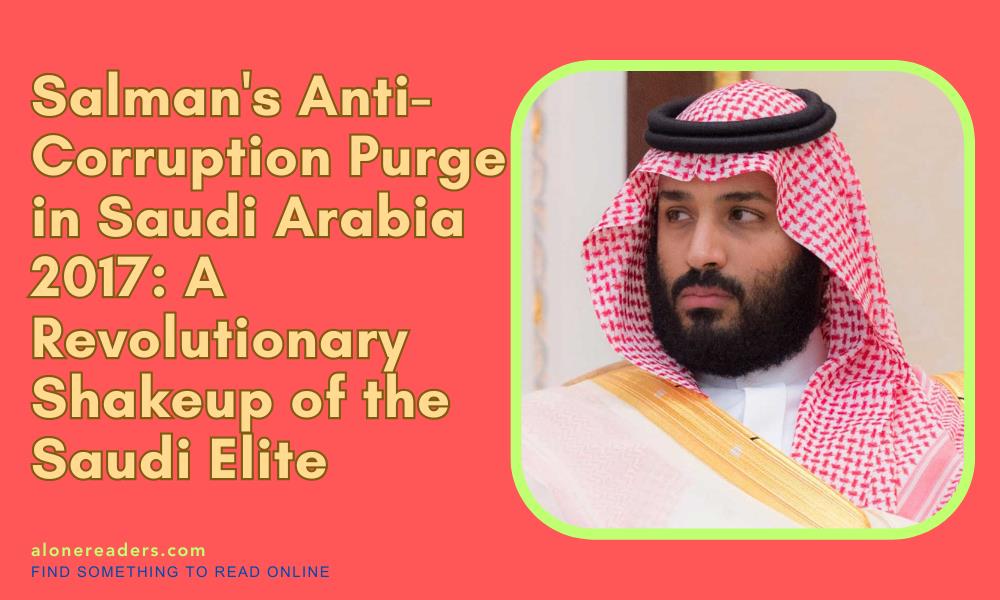
In November 2017, Saudi Arabia witnessed an unprecedented political upheaval that shook the very foundations of its elite class. Crown Prince Mohammed bin Salman, often referred to as MBS, spearheaded a sweeping anti-corruption purge aimed at consolidating his power and reforming the kingdom's economic and political landscape. This bold move not only sent shockwaves through the Saudi elite but also garnered significant international attention.
The anti-corruption campaign led by MBS targeted over 200 individuals, including princes, government ministers, and influential businessmen. Among those detained were prominent figures such as Prince Alwaleed bin Talal, one of the world's wealthiest men, and Bakr bin Laden, head of the Saudi Binladin Group. These arrests took place at the opulent Ritz-Carlton hotel in Riyadh, which was temporarily transformed into a luxurious detention center.
The official narrative presented by the Saudi government emphasized the need to root out corruption that had plagued the kingdom for decades. Billions of dollars were allegedly siphoned off through corrupt practices, undermining the country's economic stability and development. By launching this purge, MBS aimed to recover misappropriated funds and redirect them toward his ambitious Vision 2030 plan, a transformative economic blueprint designed to reduce Saudi Arabia's dependency on oil and diversify its economy.
However, the anti-corruption campaign was not without its critics. Skeptics argued that the purge was a thinly veiled power grab by MBS to eliminate potential rivals and consolidate his authority. By targeting powerful members of the royal family and influential businessmen, the crown prince effectively neutralized any opposition to his reform agenda. This move was seen by many as a calculated strategy to centralize power in the hands of the young prince, who was rapidly emerging as the most influential figure in Saudi politics.
The detainees were subjected to intense interrogations and were reportedly coerced into signing over substantial portions of their wealth in exchange for their freedom. This process, shrouded in secrecy, led to the recovery of an estimated $100 billion in assets. Critics contended that the lack of transparency and due process raised serious questions about the legality and fairness of the purge. Nonetheless, the Saudi government maintained that the campaign was conducted in accordance with the law and was necessary to restore integrity to the kingdom's governance.
The impact of the anti-corruption purge extended beyond the confines of the Ritz-Carlton. It sent a clear message to both domestic and international audiences that MBS was determined to reshape Saudi Arabia's future. Domestically, the campaign was met with a mix of fear and cautious optimism. Many ordinary Saudis, who had long resented the entrenched corruption among the elite, welcomed the crackdown as a long-overdue measure. For them, the purge symbolized a potential shift toward greater accountability and transparency in governance.
Internationally, the purge had significant geopolitical implications. It underscored Saudi Arabia's commitment to economic and social reforms, which resonated positively with Western allies and investors. By presenting himself as a modernizing force, MBS sought to attract foreign investment and support for his Vision 2030 initiative. However, the authoritarian methods employed during the purge also drew criticism from human rights organizations and some Western governments, who expressed concerns about the lack of due process and the concentration of power in the hands of a single individual.
The anti-corruption purge of 2017 marked a pivotal moment in Saudi Arabia's history. It highlighted the complexities and contradictions inherent in MBS's vision for the kingdom. On one hand, the campaign demonstrated a bold willingness to tackle entrenched corruption and push forward with ambitious reforms. On the other hand, it exposed the risks associated with an authoritarian approach to governance and the potential for power to be concentrated in the hands of a few.
In the years that followed, the legacy of the 2017 purge continued to shape Saudi Arabia's political and economic landscape. The kingdom witnessed significant changes, including the easing of social restrictions, increased participation of women in the workforce, and a push for technological innovation. These developments were seen as positive steps toward modernizing Saudi society and reducing its reliance on oil revenues.
However, the challenges remained formidable. The concentration of power in the hands of MBS and his inner circle raised concerns about the sustainability of the reforms and the potential for future political instability. The crown prince's aggressive foreign policy stance, including the controversial war in Yemen and the diplomatic rift with Qatar, further complicated the kingdom's path to stability and prosperity.
As Saudi Arabia navigates its complex transition, the anti-corruption purge of 2017 stands as a testament to the transformative ambitions of its young crown prince. It serves as a reminder of the delicate balance between reform and authoritarianism, and the intricate dynamics that define the kingdom's quest for a more prosperous and modern future. Whether MBS's bold gambit will ultimately succeed in reshaping Saudi Arabia remains to be seen, but its impact on the Saudi elite and the broader society is undeniable.